General Sir John Monash, Personal Files Book 17, 14 January - 11 February 1918, Part 12
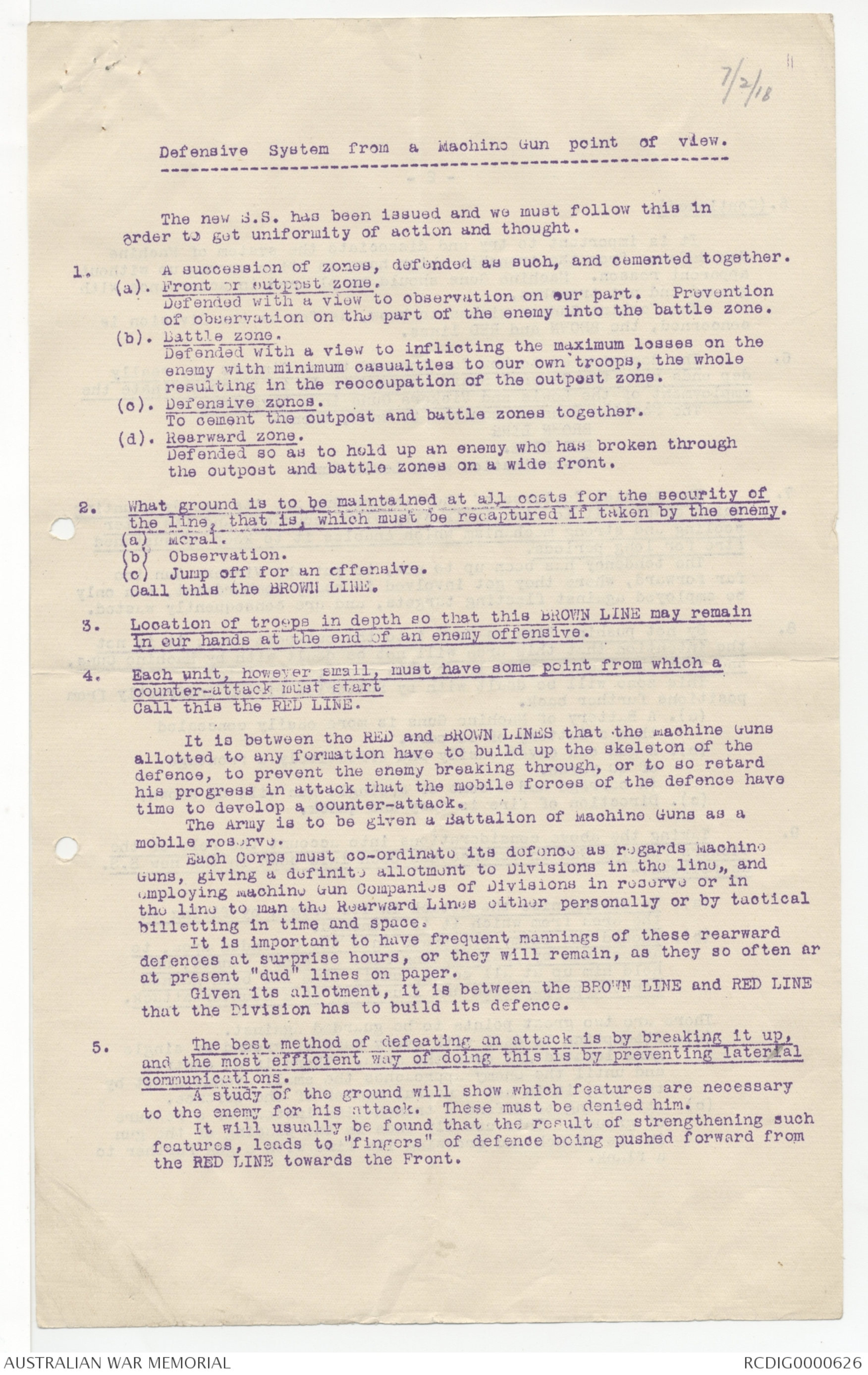
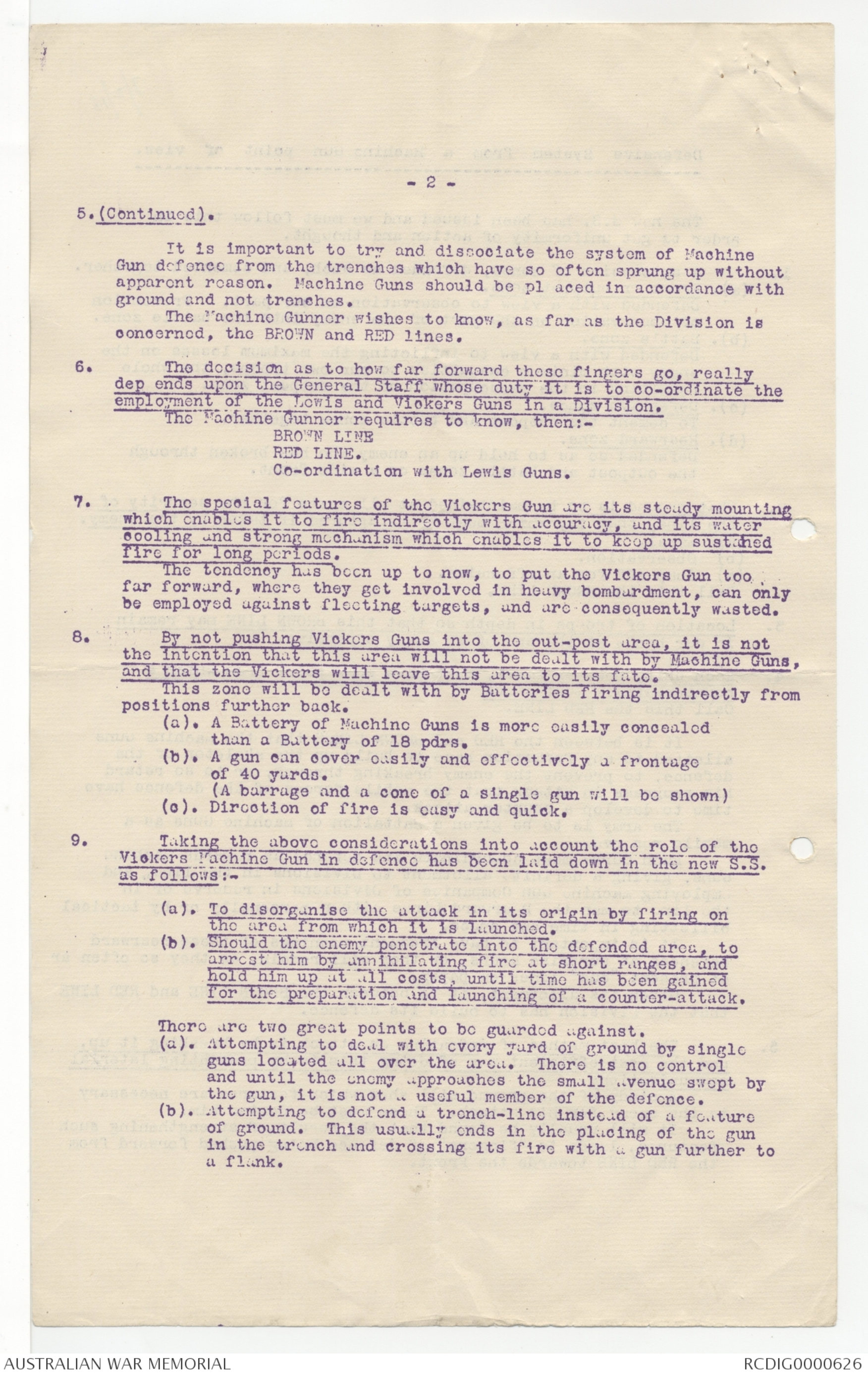
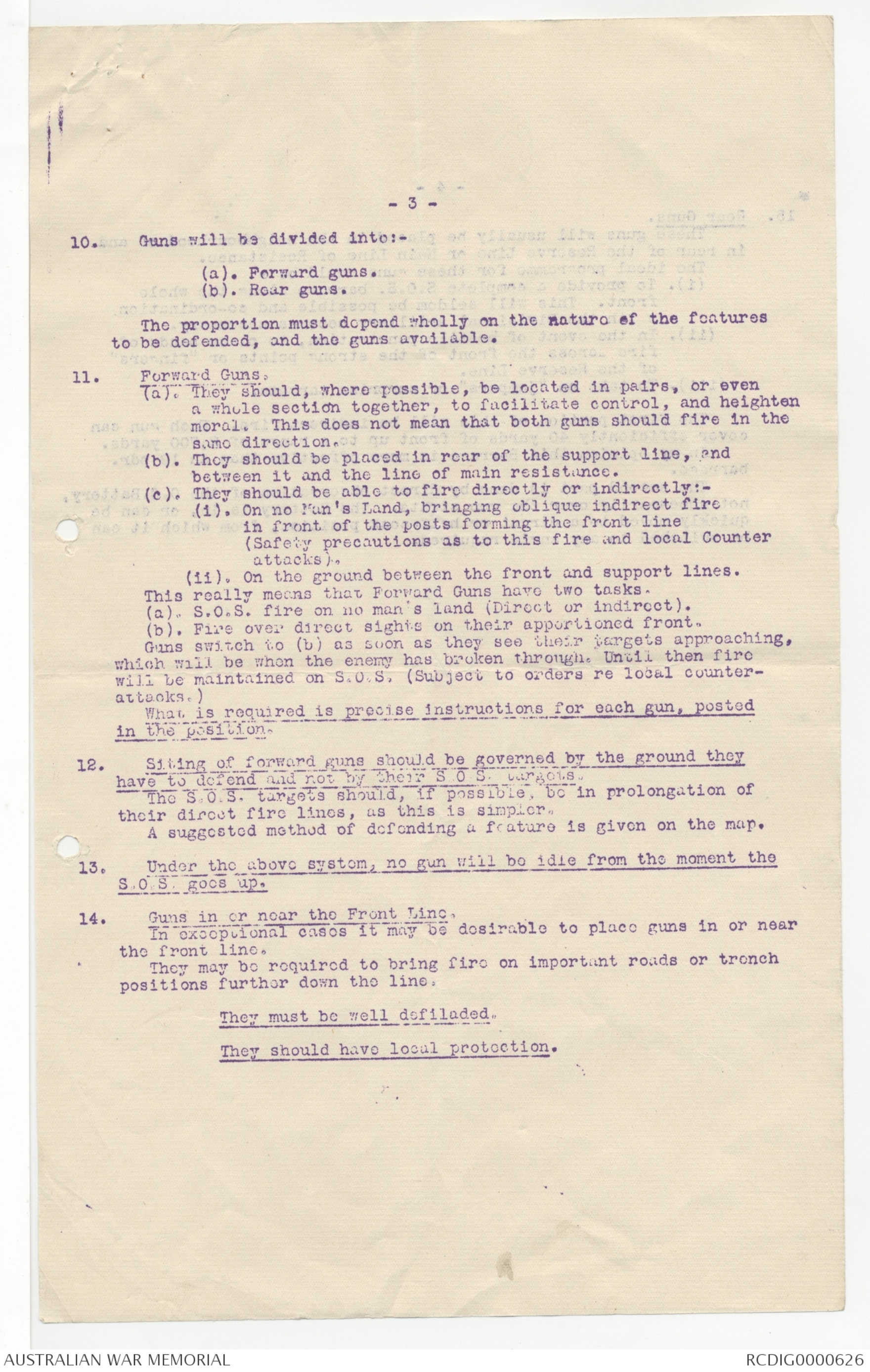
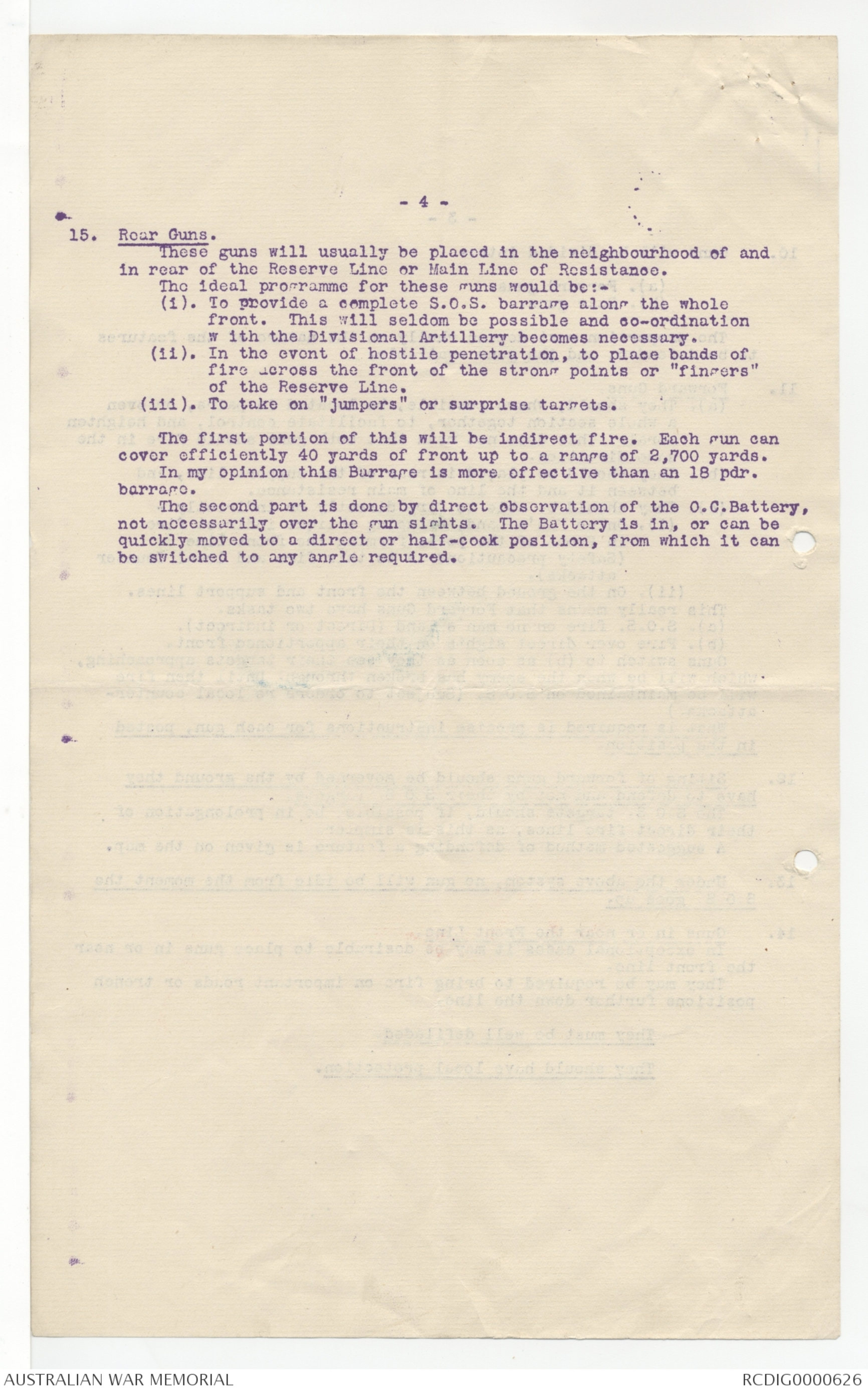

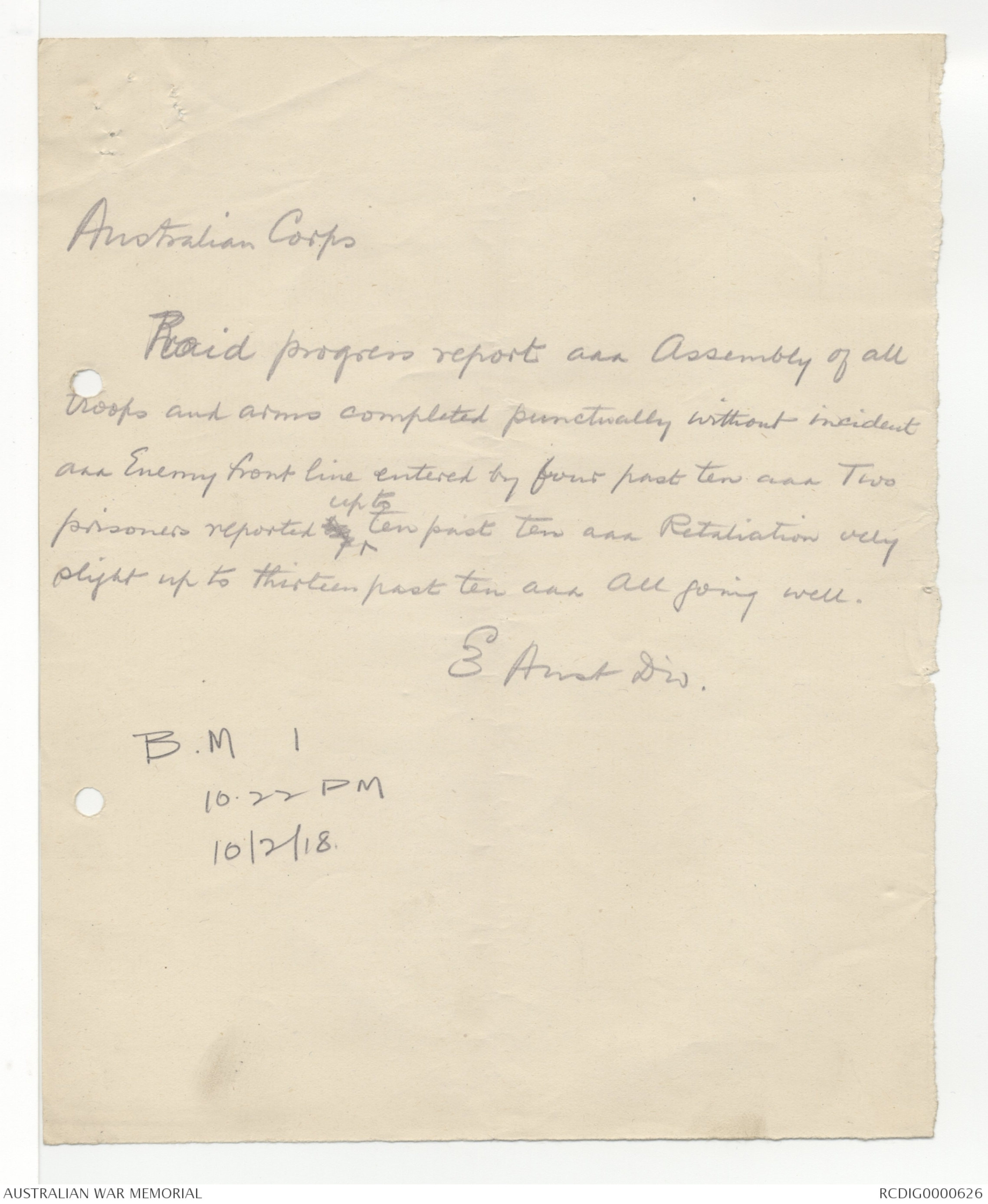
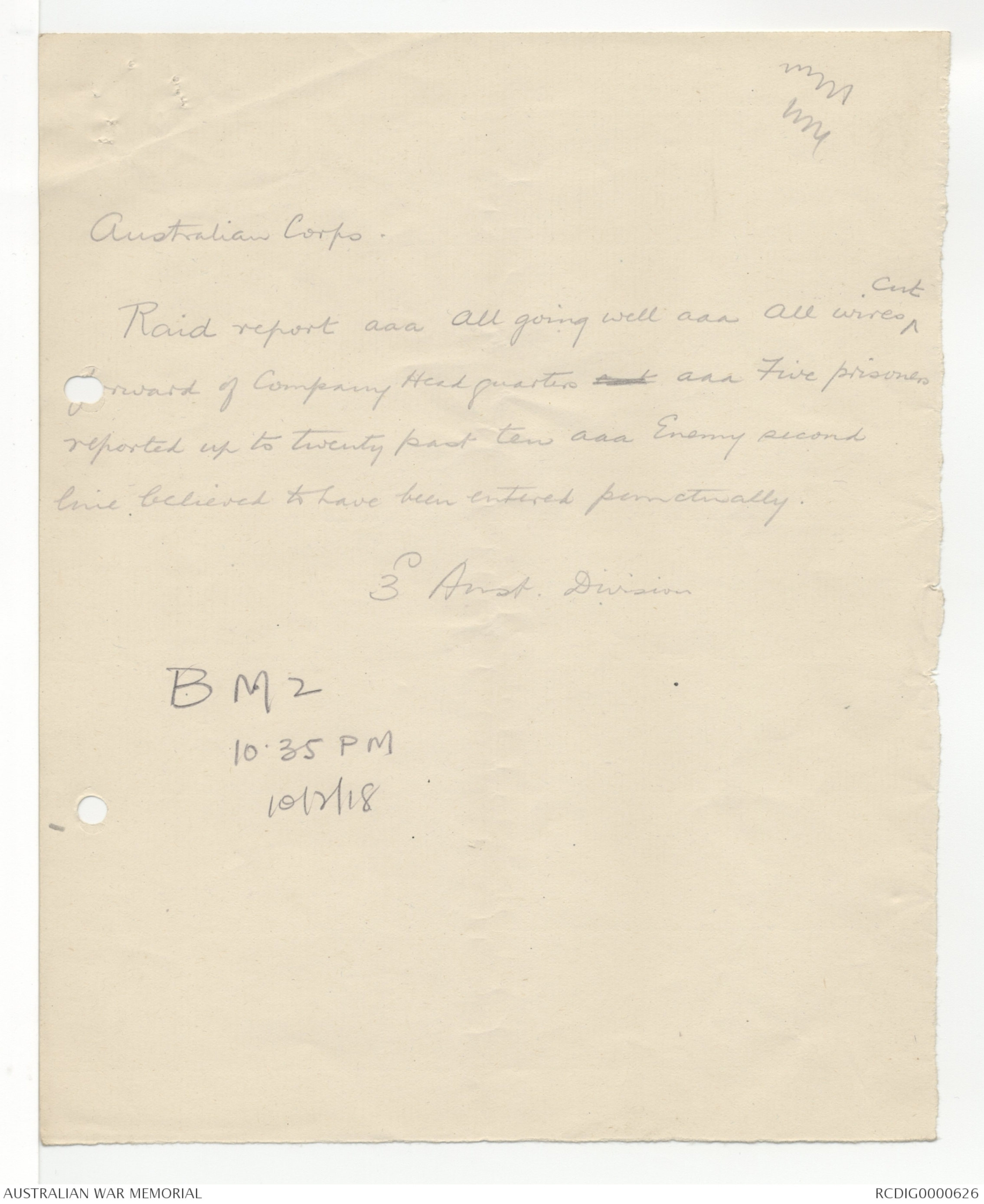

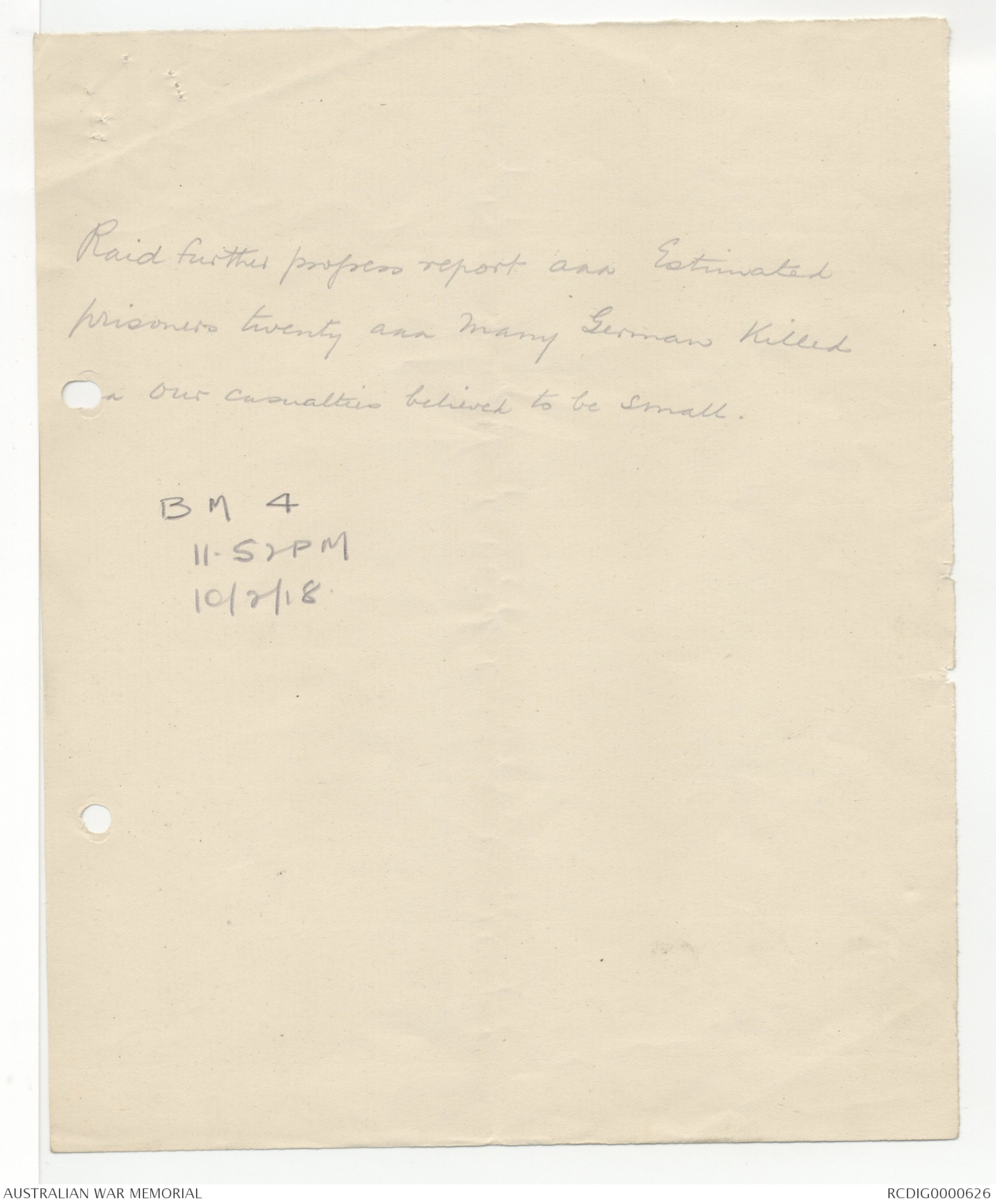
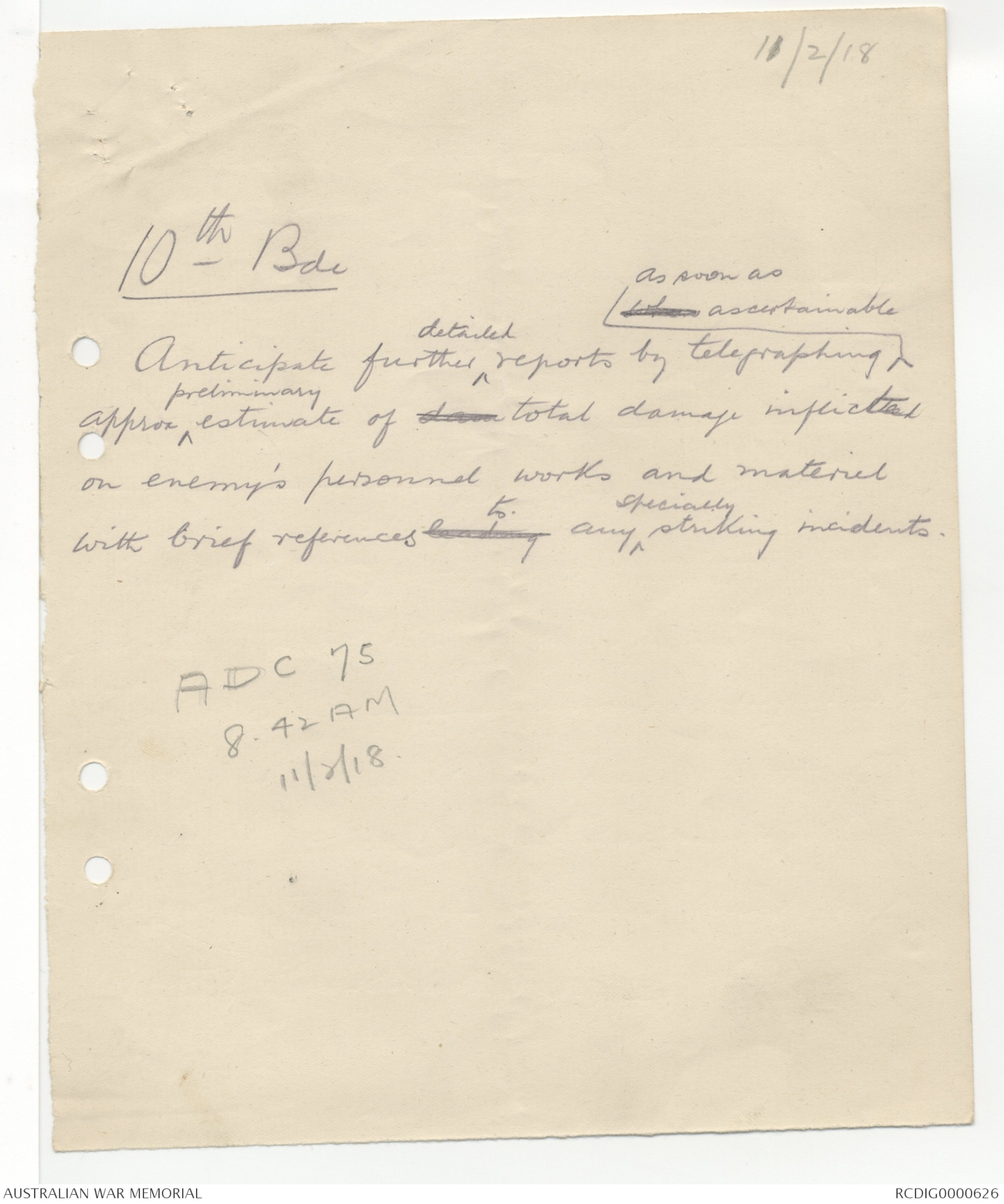
7/2/18
Defensive System from a Machine Gun point of view.
The new S.S. has been issued and we must follow this in
order to get uniformity of action and thought.
1. A succession of zones, defended as such, and cemented together.
(a). Front or outpost zone.
Defended witn a view to observation on our part.
Prevention of observation on the part of the enemy into the battle zone.
Battle zone.
(b). Battle zone.
Defended with a view to inflicting the maximum losses on the
enemy with minimum casualties to our own troops, the whole
resuiting in the reoccupation of the outpost zone.
Derensive Zonos.
(c). Defensive zones.
To cement the outpost and battle zones together.
(d). Rearward zone.
Defended so as to hold up an enemy who has broken
through
the outpost and battle zones on a wide front.
2. What ground is to be maintained at all costs for the
security of the line, that is, which must be recaptured
if taken by the enemy.
(a) Moral.
(b) Observation.
(c) Jump off for an offensive.
Call this the BROWN LINE.
3. Location of troops in depth so that this BROWN LINE
may remain in our hands at the end of an enemy
offensive.
4. Each unit, however small, must have some point
from which a counter-attack must start
Call this the RED LINE.
It is between the RED and BROWN LINES that the Machine
Guns
allotted to any formation have to build up the skeleton of the
defence, to prevent the enemy breaking through, or to so retard
his progress in attack that the mobile forces of the defence have
time to develop a counter-attack.
The Army is to be given a Battalion of Machine Guns as a
mobile reserve.
Each Corps must co-ordinate its defence as regards
Machine
Guns, giving a definite allotment to Divisions in the line, and
employing Machine Gun Companies of Divisions in reserve
or in
the line to man the Rearward Lines either personally or by
tactical
billetting in time and space.
It is important to have frequent mannings of these
rearward
defences at surprise hours, or they will remain, as they so
often ar
at present "dud" lines on paper.
Given its allotment, it is between the BROWN LINE and
RED LINE
that the Division has to build its defence.
5. The best method of defeating an attack is by
breaking it up, and the most efficient way of doing
this is by preventing lateral communications.
A study of the ground will show which features are
necessary
to the enemy for his attack. These must be denied him.
It will usually be found that the result of strengthening
such
features, leads to "fingers" of defence being pushed
forward from
the RED LINE towards the Front.
-2-
5. (Continued).
It is important to try and dissociate the system of Machine
Gun defence from the trenches which have so often sprung
up without
apparent reason. Machine Cuns should be pl aced in
accordance with
ground and not trenches.
The Machine Gunner wishes to know, as far as the Division
is
concerned, the BROWN and RED lines.
6. The decision as to how far forward these fingers go,
really depends upon the General Staff whose duty it is
to co-ordinate the employment of the Lewis and Vickers
Guns in a Division.
The Machine Gunner reguires to know, then:-
BROWN LINE
RED LINE.
Co-ordination with Lewis Guns.
7. The special features of the Vickers Gun are its
steady mounting which enables it to fire indirectly
with accuracy, and its water cooling and strong
mechanism which enables it to keep up sustained
fire for long periods.
The tendency has been up to now, to put the Vickers Gun
too
far forward, where they get involved in heavy
bombardment, can only
be employed against fleeting targets, and are consequently
wasted.
8. By not pushing Vickers Guns into the out-post area,
it is not the intention that this area will not be dealt
with by Machine Guns, and that the Vickers will leave
this area to its fate.
This zone will be dealt with by Batteries firing indirectly
from
positions further back.
(a). A Battery of Machine Guns is more easily concealed
than a Battery of 18 pdrs.
(b). A gun can cover easily and effectively a frontage
of 40 yards.
(A barrage and a cone of a single gun will be shown)
(e). Direction of fire is easy and quick.
9. Taking the above considerations into account the
role of the Vickers Machine Gun in defence has been
laid down in the new S.S. as follows:-
(a). To disorganise the attack in its origin by firing on
the area from which it is launched.
(b). Should the enemy penetrate into the defended area,
to arrest him by annihilating fire at short ranges, and
hold him up at all costs, until time has been gained
for the preparation and launching of a counter-attack.
There are two great points to be guarded against.
(a). Attempting to deal with every yard of ground by single
guns located all over the area. There is no control
and until the enemy approaches the small avenue swept
by
the gun, it is not a useful member of the defence.
(b). Attempting to defend a trench-line instead of a feature
of ground. This usually ends in the placing of the gun
in the trench and crossing its fire with a gun further to
a flank.
-3-
10. Guns will be divided into:-
(a). Forward guns.
(b). Rear guns.
The proportion must depend wholly on the nature of the
features
to be defended, and the guns available.
11. Forward Guns.
(a). They should, where possible, be located in pairs, or even
a whole section together, to facilitate control, and heighten
moral. This does not mean that both guns should fire in
the
same direction.:
(b). They should be placed in rear of the support line, and
between it and the line of main resistance.
(c). They should be able to fire directly or indirectly:-
(i). On no Man's Land, bringing oblique indirect fire
in front of the posts forming the front line
(Safety precautions as to this fire and local Counter
attacks).
(ii). On the ground between the front and support lines.
This really means that Forward Guns have two tasks.
(a). S.O.S. fire on no man s land (Direct or indirect).
(b). Fire over direct sights on their apportioned front.
Guns swirch to (b) as soon as they see their targets
approaching,
which will be when the enemy has broken through. Until
then fire
will be maintained on S.O.S. (Subject to orders re local
counter-
attacks.)
What is required is precise instructions for each gun,
posted in the position.
12. Siting of forward guns should be governed by the
ground they have to defend and not by their S.O.S.
targets.
The S.O.S. targets should, if possibie, be in prolongation of
their direct fire lines, as this is simpler.
A suggested method of defending a feature is given on the
map.
13. Under the above system, no gun will be idle from
the moment the S.O.S. goes up.
14. Guns in or near the Front Line.
In exceptional cases It may be desirable to place guns in or
near
the front line.
They may be required to bring fire on important roads or
trench
positions further down the line.
They must be well defiladed.
They should have local protection.
-4-
15. Rear Guns.
These guns will usually be placed in the neighbourhood of
and
in rear of the Reserve Line or Main Line of Resistance.
The ideal programme for these guns would be:-
(i). To provide a complete S.O.S. barrage along the whole
front. This will seldom be possible and co-ordination
w ith the Divisional Artillery becomes necessary.
(ii). In the event of hostile penetration, to place bands of
fire across the front of the strong points or "fingers"
of the Reserve Line.
(iii). To take on "jumpers" or surprise targets.
The first portion of this will be indirect fire. Each gun can
cover efficiently 40 yards of front up to a range of 2,700
yards.
In my opinion this Barrage is more effective than an 18 pdr.
barrage.
The second part is done by direct observation of the O.C.
Battery,
not nocessarily over the gun sights. The Battery is in, or can
be
quickly moved to a direct or half-cock position, from which
it can
be switched to any angle required.
8/2/18
& 2/3/18
Raiding Teams.
1. Determnation to succeed.
Each man owes it to himself & to his comrades
2. Powerful Cooperation - by
(a) Artillery - Div. Arty.
S Brigade
5th Division
H.A. Bombardment.
H.A. Counter battery.
(b) M.G. Co
(c) 3 - T.M. Batteries - & Smoke
3. Taking of prisoners - papers - Weapons. -
4. No information - if captured
say - you don't know.
5. Rare privilege - to strike a blow. - [[Limitation?]]
Nurse Cavell, Capt [[Fogatt?]], Suffering of Belgium
Australian Corps
Raid progress report aaa Assembly of all
troops and arms completed punctually without incident
aaa Enemy front line entered by four past ten aaa Two
prisoners reported by ∧ up to ten past ten aaa Retaliation very
slight up to thirteen past ten aaa All going well.
3 Aust Div.
(*B.M 1
10.22 PM
10/2/18. *)
Australian Corps.
Raid report aaa All going well aaa All wires ∧ cut
forward of Company Headquarters and aaa Five
prisoners
reported up to twenty past ten aaa Enemy second
line believed to have been entered punctually.
3 Aust Division
(*B.M 2
10.35 PM
10/2/18 *)
six prisoners
Australian Corps.
Six prisoners so far reported. identification
228 R.I.R. normal. aaa messages now
coming in more slowly by runner aaa All still
going well.
(*B.M 3
10.53 PM
10/2/18*)
Raid further progress report aaa Estimated
prisoners twenty aaa Many Germans Killed
[[a?]] our casualties believed to be small.
(*B.M 4
11-52 PM
10/2/18*)
11/2/188
10th Bde
Anticipate further ∧ detailed reports by telegraphing,
∧ as soon as when ascertainable
approx ∧ preliminary estimate of xxx total damage inflicted
on enemy's personnel works and material
with brief references handing ∧ to any ∧ specially striking incidents.
(*ADC 75
8.42 AM
11/2/18*)
 Transcriber 27924
Transcriber 27924This transcription item is now locked to you for editing. To release the lock either Save your changes or Cancel.
This lock will be automatically released after 60 minutes of inactivity.